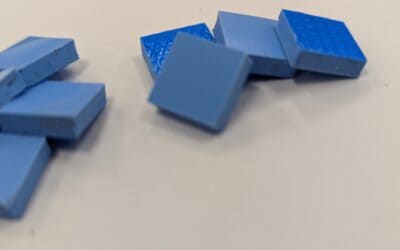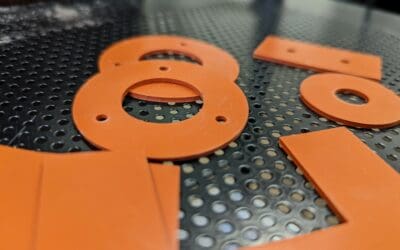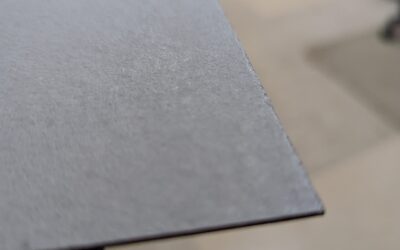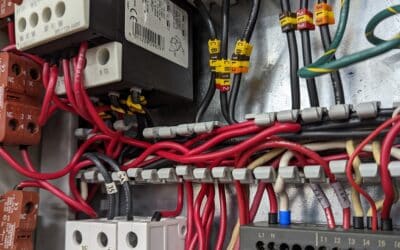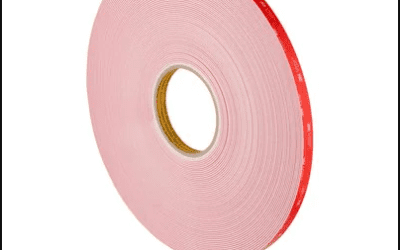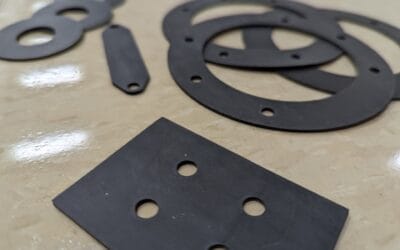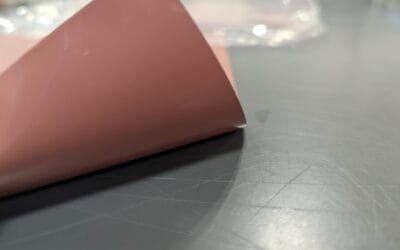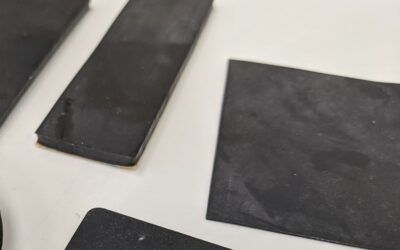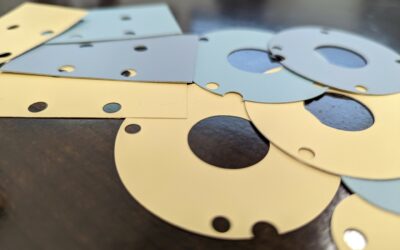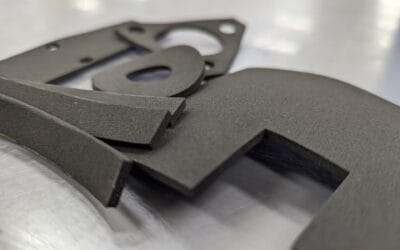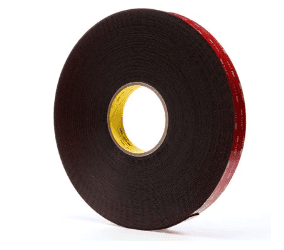Electrical Insulators
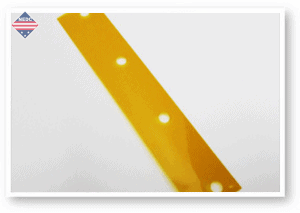
Kapton Insulator
Die-Cut Insulators were one of NEDC first products. This product line went along with gaskets as some of the first parts NEDC cut for customers. When NEDC first started, most electrical insulators were die-cut. However, with the new machinery that NEDC employees, waterjet, laser, and other machines also play a part.
Materials
Many of the materials used for electrical insulation are also used on our other products. In other words, gaskets, and thermal pads may also isolate an electrical current. As a result, materials including plastic, thermal interface pads, rubber, and paper like products all may have the ability to be electrically isolating.
Thermal Pads
One of NEDCs core products are thermal pads. For that reason, its interesting that thermal pads oftentimes serve as electrical insulators. Products such as Sil Pad®, and Gap Pad®, are marketed because of their high volume resistivity making them ideal for electrical insulation while providing a thermal management solution.
Many Gap Pad® products offer electrically insulating properties. Gap Pad® products such as GPVOUS, GPVOS, GP5000S35, GPHC3.0, GPHC5.0 offer high levels of electrical insulating properties. This is in addition to their thermally conductive properties as well.
Many Sil-Pad® products offer electrically insulating properties. Sil Pad® products that are electrically isolating include Sil-Pad 900S, Sil-Pad 2000, Sil-Pad 400, and others.
Thin Plastics
Many thin plastics that NEDC cuts are electrical insulators. Materials like Kapton®, Mylar®, Lexan®, Formex®, G10/FR4 Epoxyglass all may serve as electrical insulators. These plastics can be converted into die-cut insulators.
Mylar® is a polyethylene terephthalate(PET) that is registered by DuPont. These materials usually come in thin films ranging from .002” to .014” in thickness. It is commonly used as an electrical insulator. MYLAR® A is the most common type. Mylar® MO is approved for Class B insulation.
Kapton® is a polyimide film that is registered by DuPont. This plastic can be certified to MIL-P-46112 Type 1, and ASTM D5213 Type 1 Item A. It usually comes in thin formats such as .0005” to .005” in thickness. Anything above this enters into the category of Cirlex®. Common applications include insulation blankets, and insulation tubing. There are a few different types of Kapton Film besides Kapton HN. These include Kapton® FN, Kapton® FWR, Kapton® GS, Kapton® MT+, and Kapton® RS.
Lexan® is a polycarbonate plastic that is oftentimes die-cut in film form. Lexan® plastic is a registered trademark by SABIC. Lexan® is extremely tough, but is formable. There are many different types. However, NEDC mainly die-cuts 8010, FR700, and others.
Formex® is a flame retardant polyproylene plastic. Formex® has excellent electrical properties. This plastic is fungus inert. There is GK-5, GK-10, GK-17, GK-30, GK-40, and GK-62. These plastics run from .005” in thickness to .062”.
Epoxyglass/G10/FR4 is a plastic like material that is really laminated glass with epoxy bonding it together. These materials are oftentimes used as electrical insulators. Most often NEDC die-cuts these materials, the thickness is below .015”. G10 is generally not thought of flame retardant. However, FR4 is flame retardant. MIL-I-24768 encompasses many different options. G10 being /2, and FR4 being /27. These materials are generally available .005”-many inches thick.
Rubber
At NEDC we cut many rubber materials to make gaskets. However, rubber materials can also sometimes serve as electrical insulators. For example, silicone rubber is a great electrical insulator that is commonly used in cables or wiring. Some other rubber materials used for electrical insulation include fluorosilicone, neoprene, EPDM, or urethane.
Silicone Rubber is commonly used as an electrical insulator. In fact, this material is probably the most commonly used material at NEDC. We use silicone rubber for gaskets, insulators, vibration dampening, and many other uses. Common certifications include A-A-59588, ZZR765, and others.
Fluorosilicone Rubber is another commonly used electrical insulator. However, it is not as commonly used as silicone because of its other qualities that tend to make it more expensive. Some specifications include MIL-R-25988, AMS-3329, and others.
Neoprene Rubber is a synthetic rubber also another commonly used electrical insulator. It is used in cable jacketing for wire and cable. It is often flame resistant.
Paper like Products – Die Cut Insulators
Many paper like products serve as electrical insulators. Some common ones that NEDC sees are Nomex®, Fishpaper, Kraft Pulp, and others.
Nomex® is a aramid fiber paper. It has a high dielectric strength. This paper is used for The most common type of Nomex® is Nomex 410. Nomex 410 comes in a number of thicknesses ranging from .002” to .030”.
Fishpaper is an electrically insulating paper that is resistant to heat. It is an excellent insulator used in fuse tubes, and electronic devices. Thicknesses of fishpaper range from thin (.005”) to thicker (.030”). Specifications include MIL-I-495. It mostly comes in dark colors such as gray, or dark blue.
Electrical Qualities to look for with Die-Cut Insulators
Volume Resistivity
Volume Resistvity plays a huge part in die-cut insulators. The higher this number the better. A low number indicates the materials conductivity. This number indicates how much the insulator resists electric currents.
Dielectric Strength
Dielectric Strength is an important metric with die-cut insulators. It helps determine the quality of the insulator. It is defined as the maximum voltage required to produce dielectric breakdown through the material. All the materials above would register a high dielectric strength, for example.
Thermal Pad, Silicone, g10, Sponge
Conclusion
As with most materials NEDC provides, adhesive backing is available on certain products. Some common tapes we use from 3M are acrylic based 9485PC, 9472, 467MP, and 9469PC. For more information on electrical insulators, or you believe you have a project that could use a die-cut insulator, please contact sales@nedc.com.
Electrical Insulators Blog
Thin Gasketing Options | .015”, & Below | High Performance Gaskets
Applications get smaller, and smaller everyday. As footprints of the electronics we serve get thinner, and lighter i.e electronic signs, tablets, and other peripherals, the gasketing must get thinner to accommodate it. We have customers come in all the time looking...
Previous Posts
Thermal Pad vs. Thermal Grease/Mica
One common question I hear engineers ask about is if it's better to have...
Die-Cutting vs Laser Cutting, Epoxy Preforms: Part 2
I had a customer call the other day, saying he heard that laser cutting...
IP Ratings – Gaskets & Ratings | Particles/Liquid Ingress
IP (Ingress Protection or International Protection) ratings are a common...
Gap Pad 3000S30 aka GAP PAD TGP 3000 | Custom Thermal Pad
Thermal Pads are one of our most common products. Customers call all the time asking for recommendations on Gap Pad, or how to choose Gap pad products. There are a few products that I enjoy recommending. One of them is Thermal Pad Gap Pad 3000S30. Why Gap Pad 3000S30...
Low Temperature Silicone Gaskets | Pads | Custom Die-Cut Gasketing
Low temperature gaskets are something we've talked about before. One thing we have not discussed is low temperature silicone rubber gaskets. To be clear, these type gaskets are approaching the most extreme low gasketing material we offer at NEDC. This is because,...
Fishpaper/Vulcanized Fibre | Custom Die Cutting/Laser Cutting
At NEDC, insulators are one of our core products. Many different electrical insulation materials are among products we cut into custom shapes. However, fishpaper, and vulcanized fiber paper products are among the most popular electrical insulation materials we use. ...
ESD Gaskets | Neoprene/Silicone Gaskets, Pads | Custom Die-Cut
At NEDC, we manufacture gaskets, and custom pads. One of the more interesting materials offer is electrostatic dissipative(ESD) gasketing. Out of those materials we manufacture ESD Gaskets. What is ElectroStatic Dissipative Gasketing? It might be a good idea to start...
Low Surface Energy VHB Tapes | 3M VHB Tape LSE Series | Custom Die-Cut Tape
Low Surface Energy Materials are often hard to stick to. Conventionally for permanent fasteners that has been a problem when a tape would be more convenient and cost effective. With the addition of 3M LSE VHB Tapes, permanent fasteners are easier than ever. 3M LSE VHB...
Butyl Gaskets | Custom Die-Cut/Waterjet Cut Parts
Butyl rubber is an extremely versatile material. Butyl Rubber is a copolymer of isobutylene, and a very small amount of isoprene, both polymers are distributed throughout the polymer chain randomly. It was first synthesized in 1937 at Standard Oil, now formally...
Sil-Pad 980 aka SIL PAD TSP 1680 | Custom Die-Cut Shapes
At NEDC, we cut a whole bunch of different types of thermal pad gap filling materials. Sil-Pad 980 has a unique application list where it's used. Properties of SIL PAD TSP 1680, aka Sil-Pad 980 SIL PAD TSP 1680 has great cut-through resistance. It is silicone-based...
Buna-N/Nitrile Custom Gaskets | Waterjet-Cutting/Die-Cutting
At NEDC, we cut a lot of types of materials. A common type of material chosen for fuel-resistant applications is nitrile gasketing. Nitrile gasketing has an excellent balance of properties that make it a versatile material to pick for applications where fuel resistant...
High Dielectric & Cut-Through Strength Thermal Pads | Polyimide Reinforced Thermal Pad
At NEDC, we cut a number of thermal pads. Through all the thermal pads we sell- we see a large amount of diversity in their make-up. Most thinner thermal pads utilize fiberglass reinforcement. However, there is an alternative such as polyimide that offers great...
Epichlorohydrin Gaskets | Foam/Sponge/Solid Rubber
Fuel Resistance is one of the chief concerns that customers have when they are designing a gasket. As with many gasketing materials there is a solid rubber form as well as a sponge/cellular form of this gasketing material. Epichlorohydrin Rubber is often used in...
VHB Tape 5958FR, Flame Retardant | Die Cutting, Laser Cutting
In the rubber industry flame retardancy is a big topic of discussion and is often required by certain applications. While NEDC does deal with these polymers on a regular basis, we also deal with tapes. Flame retardancy has become such a necessity that the experts in...
UL Ratings Available | Gaskets, Absorbers, Thermal Pads, Insulators
NEDC cuts a lot of materials for different customers. One thing we wanted to assemble was every material we deal with that had a UL Rating, or UL approved materials. We've categorized this into materials generally used for gasketing, absorbers, thermal pads,...
All of the information presented above is believed to be factual and accurate; however, NEDC is not liable for any design or application utilizing this information.
New England Die Cutting
Capabilities/Products
Quick Links
Popular Blog Posts
No Results Found
The page you requested could not be found. Try refining your search, or use the navigation above to locate the post.
